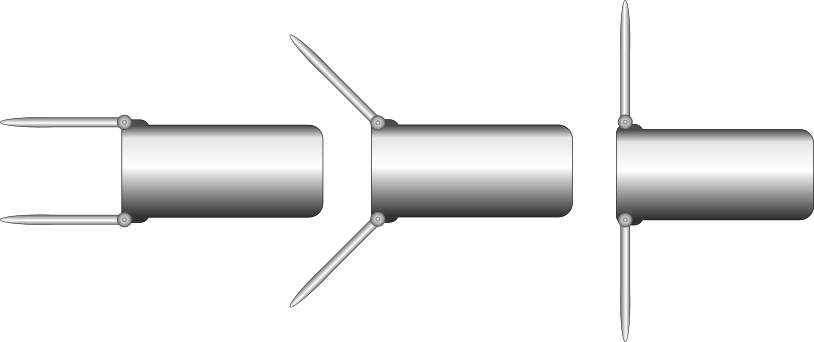Preliminary Research and Documentation
Design and build a AI-basedmodel aquaticof dronethe Freedom Flyer Wing in Ground effect craft that canis beof usedthe same scale as weight to cleansize upratio floating trash fromof the surfaceproposed offinished rivers, lakes, seas and oceans.
Requirements
The AquacyclerFreedom Flyer must contain the following parts and components
- Body - A water-proof and aerodynamic body that is designed
toascollectperfloatingthetrashmodel andstorewhichit.both sails and flies with small electric motors. ArmsWings - that are both fixed and movable/foldable and which serve the dual `purpose of flying in ground effect and sailing.- Control Mechanisms - which will allow the control of the vessel in flight, while sailing, as well as the various necessities for living aboard.
- Compressed Air Tank -
Aquacycler hasDesign apairlightweightof movable arm-like structurestank that cancollectholdtrashcompressedandairleadatita pressure sufficient totheoperatecrushervariousandcontrolshredder.mechanisms Crusher/ShredderAutopilot -An inbuilt crusherAcquire andshredderpossibly modify existing auto driving technology so as tobreakbedownablelargetoplasticoperateandtheotherFreedomtrash.Flyer on autopilot while cruising in a straight line over the oceanConveyor BeltHydrofoils -ABuildconveyor belthydrofoils thatcarrieswouldtrashretracttointo horizontal position. There would be used for take offs and sea landings in thecrusherdown position, andshredder.Aquacycler Console- A console is needed to view camera input and controlin themovementupandpositionnavigation.would Camerasgive-additionalMultiplewingunderwaterliftcamerasifthatthecanforwardtake high resolution pictures and transfer them to a computer.Proximity sensor- Proximity sensor to safeguard Aquacycler from crashing into other ships or rocks.Aquacycler Software- Software to schedule trash cleaning, pickup and drop points, and quantitypart oftrashthecollected.craft.- Solar panels
(optional)-AquacyclerFreedomcanFlyerbewoulddesignedchargetotherunonboard batteries with solar panels situated onsolarthepower,body,especiallythewhenfixedfarwings,awayandfromtheland.cabin canopies. AutomatedBatteryNavigation- Aquacycler can be programmed to navigate to a specific location in the sea using AI and ocean mapping.Remote OperationsCharging - Whennotplugged into a household power plug the system would charge the batteries.- Wind Generator - Acquire a lightweight wind generator that would be housed in
automatedthenavigationbodymode,duringAquacyclerflightcanand could beremotelyraisedoperatedatfromotheratimescomputertoonchargeland.the batteries with wind power.
How AquacyclerFREEDOM FLYER works
WhetherBy injoining automatedtogether navigationexisting modetechnologies orit should be possible to build this craft which can both fly on battery power at high speeds, fly and glide on battery power with intermittent on/off of the motors at lower speeds but for much longer distances, and also convert to a trimaran sailboat for long distance sailing when operated remotely, Aquacycler can perform the following actions:needed.
- The
arm-like2structuresmotorsskimin thesurfacecanard propel the craft at high speed in wing in ground effect. - When longer ranges are desired, the auto pilot should be able to read air speed and distance above the ocean, and then turn the motors on for bursts of
waterpowered flying until the craft has regained altitude andcollectspeed and can glide for a distance again with no power being consumed. Then shutting off thefloating debrismotors andtrash.allowing the craft to glide with the auto pilot controlling the wing and rudder surfaces until the craft has reduced speed and height above the ocean and needs to consume power again. - The
collectedinteriortrashaccommodationsisshouldpushedbetowardssufficientaforconveyor2belt.couples in 2 separate cabins with 1.5 bathrooms. A kitchenette, fold out dining table, pilot/office/entertainment chair, as well as one shower and 2 bathroom sinks and 1 toilet should be in the body of the craft. - The
conveyorwingsbeltaretransportspartially fixed and resting on pontoons, and part of thedebrissailtocanthebecrusher.broughtTheupwaterintodrainsabackverticalinpositiontoandtheunfoldedoceanintoor2sea.pieces, which converts it into a wing sail. - The
crushercorecrushesstructure should be a set of varying size rings held together by stronger structural bars, cross bars and a floor above thedebrisbilgeandarea,thewhichcrushedcoulddebrisalsofallsbeintousedtheasshredder.fresh Thewatershredder shreds the crushed debris and stores it.storage.
WhenThe AquacyclerFreedom returnsFlyer should be useful for up to land,2 shreddedcouples debristo canlive aboard either at anchor in the sea or up on a beach or parking area. Also by raising the 2 wings to near vertical should be removedable forto recyclingdock in marinas in a catamaran space. When is desired, such as to escape upcoming bad weather, the craft should be able to cover 200 km in an hour or disposal.so and much longer distances at a speed of 75 kilometres per hour, until the batteries discharge. Then it could convert to sailing mode if longer distance travel would be desired.
Figure 1 - Schematic diagram of Aquacycler
Figure 2 - Top view of Aquacycler
External Links
Licensing
This project is being developed as an open-source project with the following licensing:
Software: GPL-3.0 -https://www.gnu.org/licenses/gpl-3.0.en.htmlHardware, Design & other Intellectual Property: CC-BY-SA-4.0 -https://creativecommons.org/licenses/by-sa/4.0/



